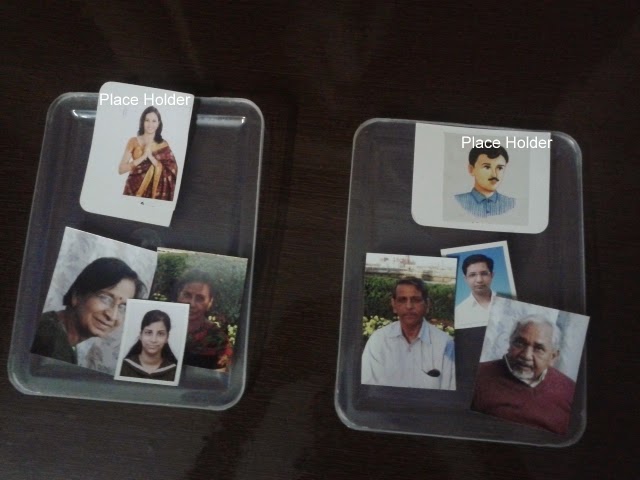Number Concept
These days I am working on teaching numbers to Tuhina. Though she is slowly getting there but I am also struggling with some areas such as sequencing. These are the steps I have followed to teach her numbers. There could be improvements or some corrections made in the steps I follow as I am also trying out what works best and in no way a 'know all,, or 'know better' situation
1. Matching and sorting according to color, shape and size - Before starting with numbers the child should be able to identify some basic shapes and be able to match and sort based on attributes such as shape, size, color.
2. Basic pre-math concepts such as
big/small
long/short
more/less
same/different
I had already written about teaching the concept of big/small in one of my previous post.Similar approach can be applied for teaching other pre- maths concepts.
e.g for the concept of more/less-
- Teach one concept at a time. First teach 'more' and when the child understands the concept then introduce 'less' while keeping 'more' on maintenance.
- start with objects and move on to pictures and worksheets. Initially keep the more difference in quantity (e.g 10 coins and 2 coins) and gradually reduce the difference.
3. Sequencing - Sequencing is important for understanding the seriation of objects, quantities and numbers. Sequencing can be taught in steps, first starting with sequencing a pattern of two objects/pictures/colors e.g as in the picture below.
Some children may understand the concept of sequencing events easily. What comes next flash cards can be used for sequencing events.
Next, the child can be taught sequencing as per attributes e.g big to small
Eventually sequencing of numbers can be taught.
4. Identification and labeling of numbers - identification of the number means that the child should be able to show (and verbal children can say the word) when a particular number is asked. e.g when the teacher says 'give me one' the child should be able to give the number card of one. or when the teacher shows 1 and asks 'which number is this' the child should be able to say 'one'. This does not include knowing the quantity associated with 1 (or any other number) as that would be taught separately. identification of numbers can be taught in a similar way as identification of pictures, using number flash cards and later on moving to worksheets. Using multi-sensory approach like sandpaper number cards would help and make learning more interesting.
5. One to one correspondence - Associating the quantity with the number can be taught by placing a bowl tagged with number 1 and then prompting the child to place just 1 bead in the bowl. We can also place many coins/beads on the table and ask the child to pick up one coin/bead. Prompt the the child to give only one coin/bead. One to one correspondence can also be taught in real life activities like putting one sock in a shoe or putting one spoon with a plate on the table.Once the child has mastered '1' we can move ahead with numbers.
6. Counting - I haven't started working on counting yet and I am planning to get some ideas from the internet. One of the interesting idea which I am planning to use is depicted in the picture below.
With Tuhina, I do not wait for the first step to be completely done before starting the next. I keep a little overlapping as long as that does not cause a problem with understanding the next concept. for e.g I started with number identification after teaching 3-4 pre math concepts (big/small, more/less, long/short) and started sequencing of colors after number identification till 4. The way each child learns is different and the pacing should be varied as per the child.
Adding a lot of number rhymes can always make learning a lot of fun. Try to use the child's area of interest e.g if the child likes trains, we can use a number train for sequencing. Also try to generalize counting in real life situations as much as possible to avoid just rote learning of numbers by the child. Have a fun trip teaching maths :).






Comments
Post a Comment